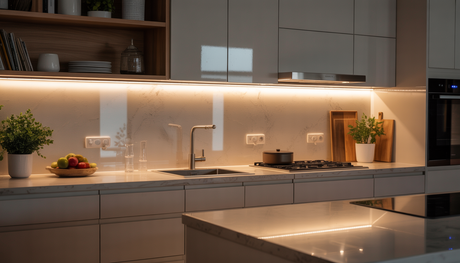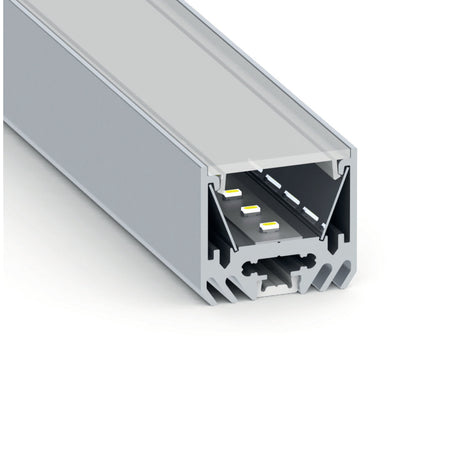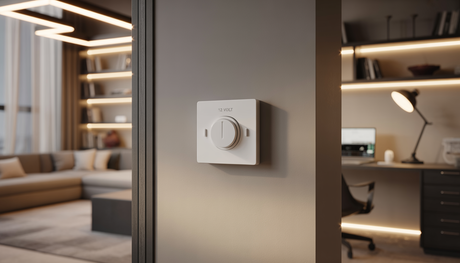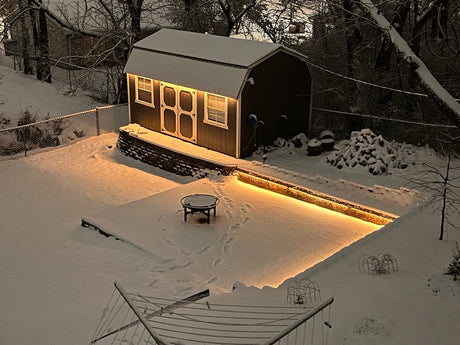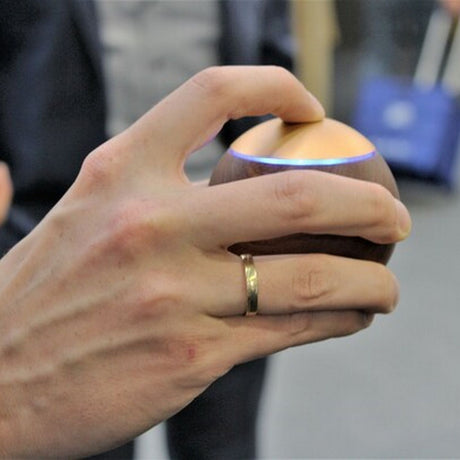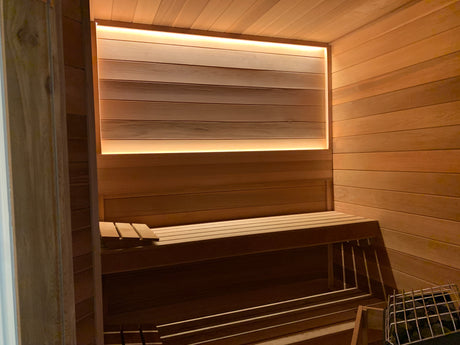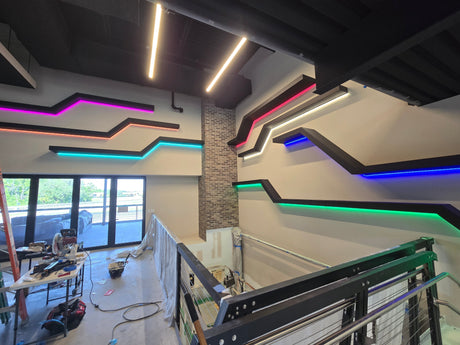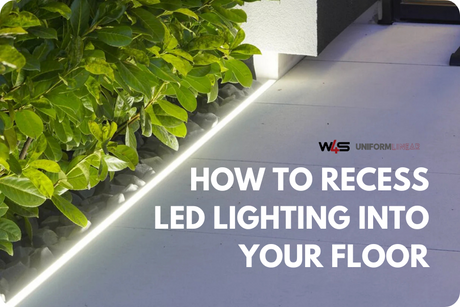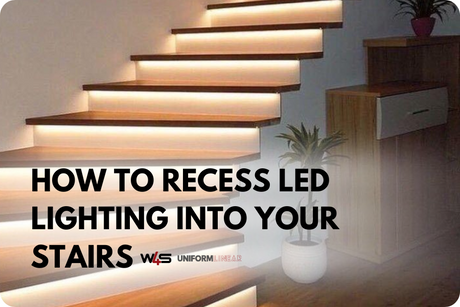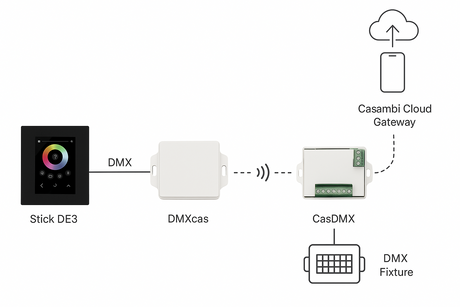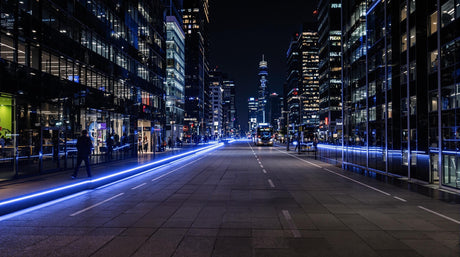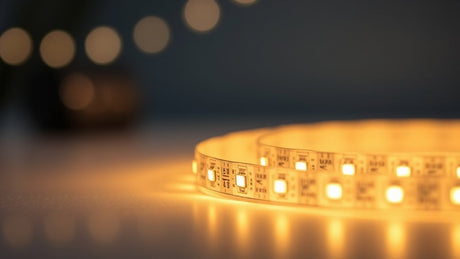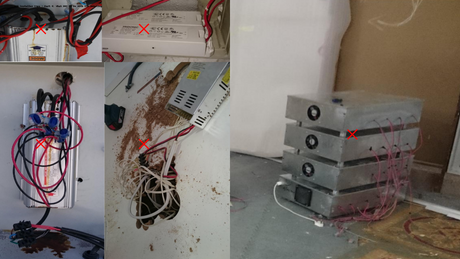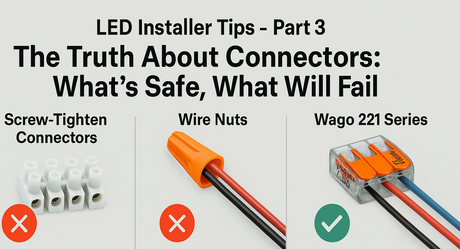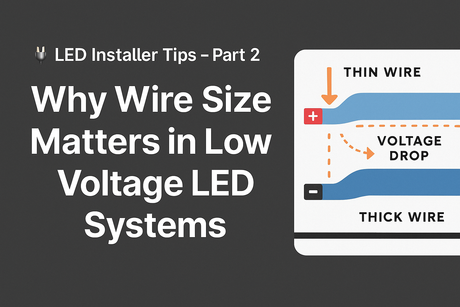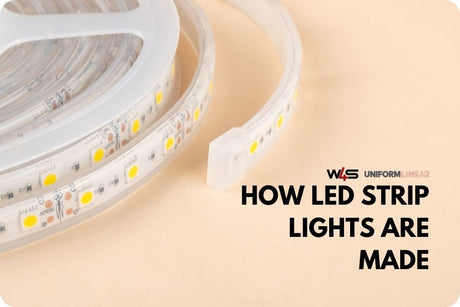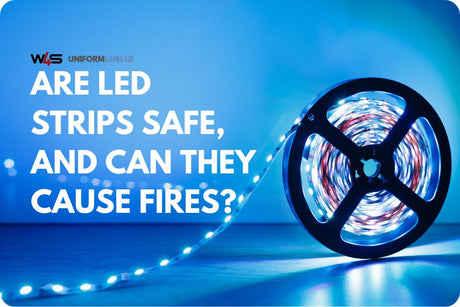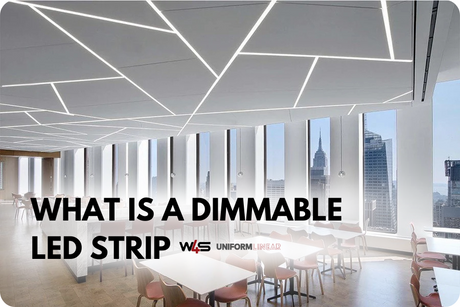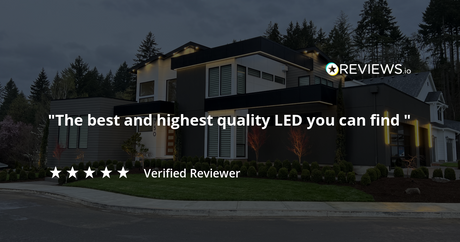Choosing the right light bulb is no longer as simple as picking up the classic round bulb you grew up with. In the debate of incandescent vs LED, technology, efficiency, and environmental concerns all come into play. Incandescent bulbs have been around for more than a century, but LEDs have quickly become the standard in modern lighting. Understanding the difference between incandescent and LED bulbs will help you make the best choice for your home or business.
This guide takes a deep dive into how incandescent and LED bulbs work, compares their strengths and weaknesses, and explains why many people are making the switch. By the end, you’ll know exactly which option makes sense for your lighting needs.
What Is an Incandescent Light Bulb?
The incandescent light bulb is the traditional technology that illuminated homes and cities for over a hundred years. It works by running an electric current through a tungsten filament. As the filament heats up, it glows and produces visible light. The glass bulb around the filament contains inert gas to slow down oxidation and extend the filament’s short life.

Pros of Incandescent Bulbs
- Low Upfront Cost: When comparing incandescent light bulbs vs LED, incandescent bulbs are the cheapest option at checkout.
- Warm and Cozy Light: They give off a soft, inviting glow that many people still associate with comfort at home.
- Even Light Distribution: Incandescent bulbs spread light evenly in all directions.
- Dimmer Compatibility: Most standard dimmer switches work with incandescent bulbs without any special adjustments.
- Heat Output: While usually seen as a downside, the warmth from these bulbs can slightly raise the temperature of a room, which may be helpful in colder climates.
Cons of Incandescent Bulbs
- Short Lifespan: The average incandescent bulb lasts only about 1,000 hours before burning out.
- Energy Inefficiency: In the discussion of incandescent vs LED efficiency, incandescent bulbs waste around 90% of their energy as heat instead of light.
- High Long-Term Cost: Because they use more energy and burn out faster, the ongoing cost of incandescents is far higher.
- Fragile Construction: The thin filament and glass make these bulbs prone to breaking.
- Excess Heat in Warm Environments: In hot climates, incandescent bulbs can make rooms uncomfortable by adding unwanted heat.
What Is an LED Light Bulb?
LED stands for Light Emitting Diode. Instead of heating a filament, LEDs produce light by passing an electrical current through a semiconductor. This makes them more efficient, durable, and versatile than their incandescent counterparts. They became widely available in the early 2000s and have since transformed how homes and businesses approach lighting.

Pros of LED Bulbs
- Extremely Long Lifespan: In the LED vs incandescent debate, LEDs last up to 50,000 hours or more, far outlasting incandescents.
- Outstanding Energy Efficiency: LEDs require only a fraction of the power to produce the same brightness, reducing electricity bills.
- Instant Illumination: Unlike some older technologies, LEDs light up immediately with no flicker.
- Cold-Weather Friendly: They maintain strong performance even in freezing conditions.
- Design Flexibility: Their compact size allows them to be used in a wide range of applications, from LED strip lights to advanced commercial fixtures.
Cons of LED Bulbs
- Higher Initial Cost: When comparing LED vs incandescent pricing, LEDs cost more upfront but pay off in the long run.
- Dimmer Compatibility Issues: Not all LEDs work with traditional dimmers; many require special dimmer switches.
- Directional Light: Most LEDs focus light in one direction, which may not always be suitable for general room lighting.
- Heat Sensitivity: Prolonged exposure to high temperatures can shorten their lifespan.
- Blue Light Output: LEDs emit more blue light than incandescents, which can affect sleep patterns if used in bedrooms.
Comparing Incandescent and LED Bulbs
When considering incandescent vs LED, the biggest differences become clear in efficiency, lifespan, cost, and environmental impact. Below, we break down each factor in detail to help you see the complete picture.
Energy Efficiency
The difference between incandescent and LED lighting is most dramatic in terms of efficiency. Incandescent bulbs convert only around 10% of the energy they consume into visible light, with the rest wasted as heat. In contrast, LEDs use nearly all of their power for illumination. When comparing LED vs incandescent efficiency, LEDs use up to 80% less energy to achieve the same brightness, which translates directly into lower utility bills.
Lifespan
The average incandescent bulb lasts around 1,000 hours. For a light used for three hours per day, that means replacements every year. LEDs, on the other hand, can last 25,000 to 50,000 hours or more. That’s about ten to fifteen years of use without replacement. When thinking about incandescent light vs LED, lifespan alone shows why LEDs are the better investment.
Light Quality
Incandescent bulbs are loved for their warm glow, which creates a cozy, inviting atmosphere. However, they are limited to this single light tone. LEDs come in a wide range of color temperatures, from warm white (similar to incandescent) to cool daylight, allowing you to tailor your lighting to specific tasks or moods. Modern LEDs also have improved Color Rendering Index (CRI) ratings, meaning they show colors more accurately compared to older models. This flexibility makes LEDs more versatile for both home and commercial applications.

Cost
At first glance, incandescent bulbs appear cheaper. A single incandescent might cost less than a dollar, while an LED bulb costs several times more. But when you factor in replacement frequency and energy bills, LEDs win. For example, a household using LEDs instead of incandescents could save hundreds of dollars over several years. This is where the true value of LED vs incandescent lighting becomes clear: longevity and efficiency make LEDs the most economical choice in the long run.
Environmental Impact
Lighting contributes significantly to global energy consumption. Incandescent bulbs, with their wasteful use of electricity, increase carbon emissions and create more waste due to their short lifespan. LEDs, by lasting longer and consuming far less energy, reduce both waste and emissions. When comparing incandescent vs LED, LEDs are clearly the environmentally friendly choice.
Heat Output
One of the often-overlooked differences in incandescent vs LED efficiency is heat. Incandescent bulbs emit a large amount of heat, which can make a room warmer and even create fire risks if used near flammable materials. LEDs remain much cooler to the touch, making them safer and more practical for enclosed fixtures, children’s rooms, or commercial settings where lights run for long hours.
Interchangeability
Both incandescent and LED bulbs can fit into many of the same sockets. However, the difference between incandescent and LED bulbs lies in compatibility with features like dimmers. While incandescents are naturally dimmable, many LEDs require specific LED dimmer switches to perform correctly. This should be considered when replacing old bulbs with LEDs.
Incandescent vs LED in Real-World Applications
To better understand the incandescent vs LED debate, it helps to consider common use cases:
- Home Lighting: LEDs are best for kitchens, living rooms, and bedrooms, where efficiency and long lifespan are key. Incandescents may still be preferred in lamps where a warm glow is desired.
- Commercial Spaces: The LED vs incandescent efficiency advantage is critical in businesses where lights run all day. LEDs reduce energy costs and maintenance.
- Outdoor Lighting: LEDs outperform incandescents in cold conditions and are available in weatherproof designs.
- Decorative Lighting: Incandescent bulbs sometimes win here for nostalgia or aesthetic appeal, but LEDs now come in vintage-style options that mimic the look while retaining efficiency.
Frequently Asked Questions About Incandescent vs LED
To wrap up the debate of incandescent vs LED, here are some of the most common questions homeowners and businesses ask when choosing between the two.
Which is more energy efficient: incandescent light vs LED?
When it comes to LED vs incandescent efficiency, LEDs are the clear winner. They use up to 80% less electricity to produce the same level of brightness. For example, a 10-watt LED can produce as much light as a 60-watt incandescent bulb. This drastic difference in energy use is one of the primary reasons why many countries have phased out traditional incandescent bulbs.
Do LEDs really last longer than incandescent bulbs?
Yes. An incandescent light bulb vs LED comparison shows that incandescents typically last about 1,000 hours, while LEDs can last 25,000 to 50,000 hours. That means replacing an incandescent bulb roughly once a year, while an LED can last more than a decade with regular use.
What is the difference between incandescent and LED in terms of cost?
Although LEDs are more expensive upfront, their long lifespan and reduced energy usage make them far more cost-effective. Over the course of five years, the operating cost of LEDs can be up to 80% lower compared to incandescents. This makes LEDs the smarter choice when you consider total ownership cost.
Can LEDs replace incandescent bulbs directly?
In most cases, yes. LEDs are designed to fit into standard sockets, making them an easy swap for incandescents. However, dimmer switches may require an upgrade to LED dimmers to function correctly. Always check compatibility before replacing multiple bulbs in one space.
Do LEDs give off the same warm light as incandescents?
Yes, modern LEDs are available in a variety of color temperatures. If you enjoy the cozy glow of incandescent bulbs, look for LED bulbs labeled as “warm white” (2700K–3000K). These are designed to replicate the classic look of incandescent lighting while offering the efficiency benefits of LEDs.
What about environmental impact?
The difference between incandescent and LED is also clear in sustainability. LEDs reduce carbon emissions by consuming less electricity and last longer, which means fewer bulbs end up in landfills. Incandescents contribute more waste and require far more power over their lifetime, making LEDs the environmentally friendly choice.
Myths About Incandescent vs LED Lighting
There are a few misconceptions worth clearing up in the incandescent vs LED debate:
-
Myth: LEDs are too harsh.
Fact: LEDs are available in many color temperatures, including warm white that looks nearly identical to incandescent light. -
Myth: Incandescents are always cheaper.
Fact: While they are cheaper upfront, the cost of constant replacements and higher energy bills outweighs the initial savings. -
Myth: LEDs cannot be dimmed.
Fact: Many LEDs are dimmable, but they require the right dimmer switch to work properly. -
Myth: Incandescent bulbs give better color.
Fact: Modern LEDs have excellent CRI ratings and often render colors more accurately than older incandescent bulbs.
Conclusion: Why LED is the Smarter Choice
When comparing incandescent light vs LED, the differences are undeniable. Incandescent bulbs may win points for their nostalgic warm glow and lower upfront price, but their inefficiency, short lifespan, and environmental drawbacks make them a poor choice in today’s energy-conscious world. LEDs, by contrast, combine energy efficiency, long lifespan, flexibility, and safety, making them the clear winner for both residential and commercial applications.
For anyone debating incandescent light bulbs vs LEDs, the bottom line is that LEDs are better for your wallet, your home, and the planet. They deliver more light per watt, last significantly longer, and adapt to almost any lighting need.
Ready to Make the Switch?
If you are considering upgrading from incandescent to LED, Wired4Signs USA offers a wide range of LED strip lights, dimmers and controllers, and other professional-grade LED solutions to help you create efficient, long-lasting lighting for your home or business. Contact us today for expert advice on finding the right LED products for your project.





